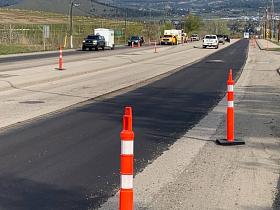Alberta investing $335 million in paving projects
The Government of Alberta is investing $335 million into paving projects to keep the province’s highways smooth.
“Albertans have been clear that they expect our highways to be well-maintained,” said Devin Dreeshen, Innisfail-Sylvan Lake MLA and minister of transportation and economic corridors.
“That is why we are adding an increase of $80 million to the paving and overlay budget to ensure that Albertans are driving on the best roads in the country, and our industries can efficiently deliver goods and services along our expansive economic corridors.”
The 2023-24 paving and overlay budget is $335.1 million, which is an increase of $80 million from last year.
Alberta Roadbuilders and Heavy Construction Association approved of the investment into the highway system, said CEO Ronald Glen.
“Highway rehabilitation and new construction provides a massive return on investment for Alberta communities and business,” Glen said.
Gary Brooks, Carmacks Enterprises Ltd. president, added: “This significant investment reflects a strong commitment to enhancing connectivity, safety and economic growth for all.
“By extending the lifespan of our highways and promoting vital industries, these initiatives lay the foundation for the efficient movement of people, energy and goods. This investment marks an excellent start to catch up with the aging infrastructure and positions us well for the future.”
This year there are 42 paving projects across Alberta, including eight in the province’s central region.
The Ministry of Transportation and Economic Corridors is also looking into new technologies and different ways to find possible improvements to the paving process. These technologies have potential to reduce costs and extend the lifespan of roads, depending on their longer-term performance and cost-effectiveness.
This year’s projects include testing the use of the Cold In-Place Recycling technology along Highway 33 near Barrhead. This technology grinds the existing pavement, remixes it with new materials and replaces it as a new layer of pavement.
The technology reduces the need to haul away old material and reduces emissions as materials are remixed without the use of heat. The technology is generally used along portions of highway with severe stress, such as cracking.





